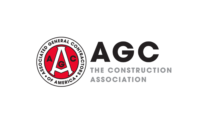The success of the hostilities in Iraq has set the stage for stronger economic recovery and growth, according to the Spring 2003 forecast from the Portland Cement Association. Clearing economic vision points to a change in construction activity, with nonresidential construction poised to lead the way.
“Robust economic activity is expected to characterize 2004,” reported PCA Chief Economist Edward J. Sullivan at the unveiling of the forecast during the association’s recent board meeting. “The economic momentum materializing in the second half of 2003 will be bolstered by tax cuts, stronger job creation and a full-fledged recovery in investment spending.”
PCA expects residential construction activity to remain at historically strong levels despite predicted higher interest rates. In addition, sustained, stronger economic growth will generate a revival in nonresidential construction activity.
Existing-home sales still high in April, said NAR
Sales of existing single-family homes rose last month and are at the fifth highest level of activity ever recorded, according to the National Association of Realtors.
Existing-home sales rose 5.6 percent in April to a seasonally-adjusted annual rate of 5.84 million units from a level of 5.53 million units in March. Last month’s sales activity was 3.2 percent above the 5.66-million unit pace in April 2002.
David Lereah, NAR’s chief economist, said the indicators were up. Consumer confidence rose following the action in Iraq, mortgage interest rates have been at record lows and new-home sales rose sharply in March, he said. The favorable conditions in April caused existing-home sales to rise to their fifth-best showing ever, a pace that will be difficult to sustain but demonstrates that the housing sector will be close to a record this year.
According to Freddie Mac, the national average commitment rate for a 30-year, conventional, fixed-rate mortgage was 5.81 percent in April, up slightly from 5.75 percent in March; it was 6.99 percent in April 2002.
With the yield on the 10-year treasury note dropping to the lowest level since 1958, mortgage interest rates may decline to comparable lows, Lereah said.
The national median existing-home price was $163,400 in April, up 6.8 percent from April 2002 when the median price was $153,000. The median is a typical market price where half of the homes sold for more and half sold for less.
Housing inventory levels at the end of April rose 10.3 percent from March to a total of 2.47 million existing homes available for sale, which represents a 5.1-month supply at the current sales pace.
Regionally, the existing-home sales pace in the West jumped 9.6 percent from March to an annual rate of 1. 60 million units in April, and was up 6 percent from April 2002. The median existing-home price in the West was $233,200, up 6.1 percent from the same month a year earlier.
Existing-home sales in the Northeast rose 4.8 percent in April to a pace of 660,000 units, but were 4.3 percent below a year ago. The median existing-home price in the Northeast was $178,700, up 14.3 percent from April 2002.
Home resale activity in the South increased 4.1 percent in April to an annual rate of 2.31 million units, and was 3.6 percent above April 2002. The median price of an existing home in the South was $152,400, which was 7.2 percent higher than a year ago.
In the Midwest, homes were reselling at an annual rate of 1.27 million units in April, 4.1 percent higher than March and 3.3 percent above the same month a year earlier. The median price in the Midwest was $135,900, up 5.0 percent from April 2002.


Report Abusive Comment